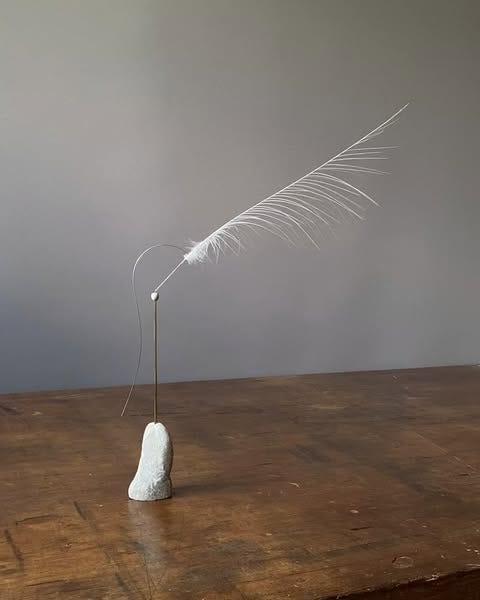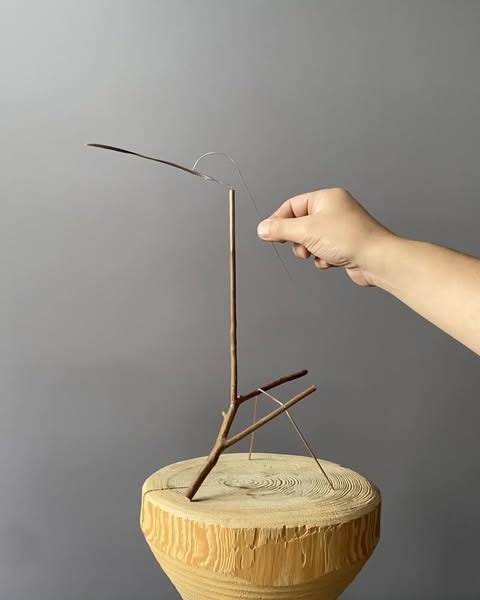We often think of art as imitating nature. After all, much of the art we enjoy are literal depictions of nature. But this morning I am thinking about a part of nature we only “see” by its effect: wind.
Here the artist must turn away from replication and depiction, as they will not suffice for that which we cannot see. Artists must make the invisible visible; to the eye and to the mind.
Arietta Mobiles,
by Odagiri Satoshi
Odagiri Satoshi makes the most delicate and sparse mobiles (like the dangling jingling plastic child chimes you hung over your baby’s crib). These raise the art of mobile from visual stimulation into mindful contemplation.
Check out the video of this White Heron feather’s balancing act:
Or this pigeon feather:
These pieces do not make the invisible breeze visible, but I can feel it. I can sense its various motions and my eyes can imagine the breeze in the trees outside my window dancing from leaf to leaf.
Like dancers listening to some great song. Again without the use of my eyes, Thomas Merton has clued me in to this same dance of wind via a bobwhite (a type of quail):
O Sweet Irrational Worship By Thomas Merton Wind and a bobwhite And the afternoon sun. By ceasing to question the sun I have become light, Bird and wind. My leaves sing. I am earth, earth All these lighted things Grow from my heart. A tall, spare pine Stands like the initial of my first Name when I had one. When I had a spirit, When I was on fire When this valley was Made out of fresh air You spoke my name In naming Your silence: O sweet, irrational worship! I am earth, earth My heart's love Bursts with hay and flowers. I am a lake of blue air In which my own appointed place Field and valley Stand reflected. I am earth, earth Out of my grass heart Rises the bobwhite. Out of my nameless weeds His foolish worship.





